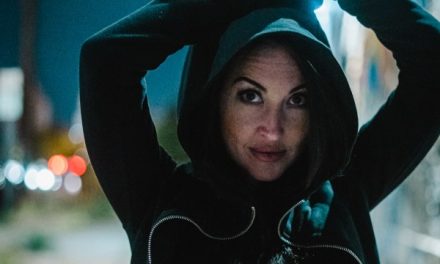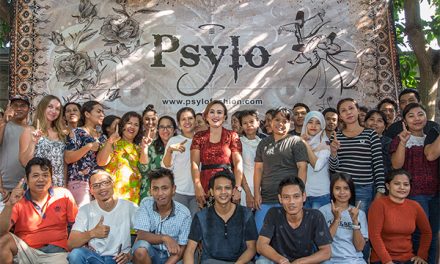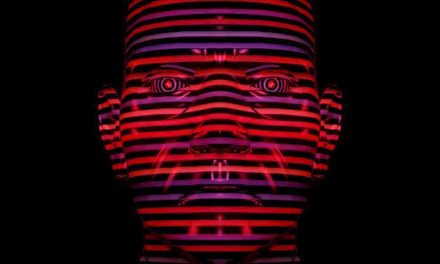Bric á Brac’s music puts together sonic snippets and significant moments from his life in a highly intriguing way. Just like its namesake, seemingly random elements are ornamentally intertwined to reveal the bigger picture like a jigsaw puzzle, or a bouquet of assorted & personal sentiments.
His debut record ‘Specimen 001’ owes much of its existence to many cherished moments, significant places, special people, and an eloquent poetic nostalgia that binds it all together beautifully with the mucilage of the artist’s own unique expression. Immaculately integrating his own individuality into a larger collective coherence, Bric á Brac has unmistakably put a part of his soul into the record, which makes it resonate with a profound and sincere sheen.
Interview by Mister Mime on 25/10/21, edited by Shantiago.
How did you choose your artist name ‘Bric á Brac’?
Bric á Brac refers to a type of shop where you’d find lots of different but curious items. People would bring in their old things and the shop would sell them. They could be anything from teapots to collections of bugs pinned to boards, to old radio equipment. The shop has no overall theme as to what you might find inside. You need to go in and discover for yourself if there’s something in there you’ll love.
I felt that was a good analogy for my music. I’m not interested in sticking to one style or vibe but just exploring whatever feels fun and interesting regardless of genre expectations. The name is intended to give people a heads up that whilst there may be an unintentional connecting sensibility to the tracks they’ll each be different from the last. Each is like an item on the shelf in a Bric a Brac shop. It’s a licence for me to do as I please really.
What does the album name ‘Specimen 001’ mean? What about the track names? How do you usually name your tracks? Are there any stories behind the creation of the tracks and/or the making of the album that you would like to share?
Specimen 001 is a name that grew from the process of creating the artwork for the album. Objects or artefacts are categorised and labelled as they might be in a museum display. For most of the track names, I’m finding words that feel right for the sound of the track. “Sea glass” is stuff you can find when beach combing like driftwood. A glass bottle or something has been thrown away, ended up in the ocean for years and been eroded into something of beauty. It’s like waste which now has a story. Regardless please don’t throw your rubbish into the ocean guys.
Under the hollow tree comes from the lyrics which were written by my friend Cat Brooks whose album I had produced. Once we’d done with a big project like that you want to keep going so she asked if there’s anything I’d been working on. I played her a guitar piece I’d been playing with which was about the feeling of floating away down rivers and streams. She popped into the next room and 10 minutes later came back with her lyrics and we recorded. Other times a song name can come from a part of the recording process. Mute at the bridge and Sain’t Mary’s Can was like that. The opening sound in Mute at the bridge is my guitar with a rag stuffed under the strings at the bridge of the guitar muting them. Mary’s Can refers to a field recording I took of filling up a watering can at Saint Mary’s Church in Silchester where I grew up and where I visit my Mothers grave and place flowers. Sensory refers to the Sensory garden at my place of work. It’s a day centre for kids with special needs and we have a Garden full of outdoor musical instruments such as marimbas and giant wind chimes which naturally I’ve recorded after hours.
The Bell cracked: is named after some giant chimes that were used in a theatrical production I was working on. They stand some 10 feet tall and I took the opportunity to sample them. The opening of the tune was one treatment I had done for the production but ultimately we went with another one. I liked what I’d made though and so expanded on it to be a complete tune in it’s own right. Nooks and Crannies: I went around recording so many things for this track, The sound of trees in the wind, which is called (psithurism) What a cool word. A Red Kite bird of prey outside my studio window, Stones being rubbed across a dried river bed. A child exclaiming about the bubbles coming from my friend’s bicycle bubble machine when we were out for a ride. I felt like I had found all these sounds in various Nooks and Crannies.
Kicking Snow: Which was the first track written for the album is so-called because it features a recording of a large plate of ice from a lake being thrown out onto the frozen water and breaking apart. I layered that up with a snare hit occasionally. (Kicking snow) sounds more poetic than (smashing ice) so I went with that. Moving Floor: This was an attempt to capture the sensation you feel when you maybe are having trouble walking but are kind of enjoying your discombobulation. Grains: This track looks at deconstructing recorded media. The clicks and pops of a record overcoming the sound it’s trying to convey. Grains seemed an apt description for this.
Can you tell us about your musical background? How did your journey begin?
Where do you start? We all absorb music from a very early age. There were a few novelty Moog albums in my parents’ music collection which I loved but we weren’t a musical household and music was not of interest at school. It wasn’t until 1998 when I first joined friends at psytrance club nights and parties that I was inspired to start building my own PCs and attempting to write music on cracked software. Then after a few years getting some advice from Ott on how to approach studios for work/internships. In 2004 I joined a local media facilities company with a sound department where I did my best to become indispensable. I left school with no qualifications and it was very good of them to take me on. Cheers guys. I learned a great deal there and stuck with them until they folded in 2010 when I became freelance. All that time I was also writing psytrance and playing parties and enjoying that scene.
How would you describe your signature sound? How did it develop?
It’s something I’ve completely unaware of and hope to stay so. I’m just playing and enjoying myself.
What were some of the production techniques, processes, workflows, tools or instruments that you believe are instrumental to your sonic identity?
I love old analogue synths and bits n bobs. I’ve never had a great deal of money and so I’d get by buying old broken equipment and learning to fix and modify it. The media company were good enough to give and sell me a few things when they closed. I bought a very cheap set of NS-10s and an amp from them and Steve the head of the audio department “gave” me his Roland JX-3P with programmer which was my first analogue synth. It was never one of Rolands flagship items but it’s an amazingly well-featured little poly-synth Over the years I’ve built up a small but useful collection of stuff that I use. Soft-synth wise I use Abelton’s native synths. Namely operator. I try and keep third party software to a minimum and use soft-synths for tasks where I need absolute control. The hardware is for when I want unique often unrepeatable things. I know things like Massive and Serum are out there and that they are great but everyone and their mate has them.
Aside from that, I fumble about with guitars and I recently picked up a Hohner Pianet T which is an 80’s Electromagnetic piano that sounds like a Rhodes but at a fraction of the price. It’s all over my last few tracks as is my DX7 Mark 2. Something I used to consider the antichrist of synths. But I’m in a much happier place now, haha.

Can you tell us a bit about the album artwork?
This took months of trying out different ideas. I bought lots of little trinkets and things of eBay to try and set up a Bric a Brac shop-like scene which I’d then photograph and paint but pervert it into the fantastical in some way. In the end, I had to narrow my view down to just one object which was this Fairy alien creature labelled “Specimen 001” I then painted it in oils which took a looooooong time. I usually work in acrylics but wanted to give oils a try. It was a learning curve but hay we were all in lockdown so time wasn’t exactly hard to come by.
What does ‘psychedelic’ mean to you? How/why does psychedelia merge (well) with electronic music in your experience?
What does psychedelic mean? That’s a question you can spend a lifetime exploring as it’s related to how we process our reality. If there is such a thing. Electronic music is capable of seemingly limitless exploration of sounds and when you hear it loud it’s a synaesthetic experience. Sounds become shapes or objects and textures, for me anyway. I believe that’s the case for most people if you look at the more poetic language used to describe sounds and music. Especially with electronic music, you can create un-acoustic or unnatural sounds and then play with the line between real and unreal. It’s obvious to me that you’d delve in through the looking glass with that sandbox.
Who are the musicians/artists that have influenced you throughout your journey?
I could list so many: Perrey and Kingsley for their early Moog albums, and along with them we can add the BBC Radiophonics workshop and so on. Artists like Vangelis, Kate Bush, Queen, Jean-Michel Jarre, Gary Numan Brian Eno and of course Ott, Shpongle, Infected Mushroom. People who seemed to revel in creating new sounds rather than fitting into what was already out there. I find that extremely exciting especially when viewed in the context of the times those early synth pioneers were working. Musician’s unions were in hard opposition to them. The idea was that they were putting real musicians out of work. We know that wasn’t the case but I understand why the use of this new technology would have scared people like that. You could sound bigger than an orchestra with a few synths and an 8 track.
Who/what are some things/places or artists from other art forms, & people from other disciplines or walks of life that inspire you?
I’ve loved Jackie Chan’s movies since I was a kid. There was nothing like him in the west. Such creativity in an arena that was considered a bit naff in the west maybe. Fights in western films were short ugly things. In Chinese cinema, they’re multi-dimensional extravaganzas just as beautiful and skilled as ballets which progress and develop the story being told.
What do you like to do besides music?
I like to fix synths, even making the odd little device. Keeping flexible and fit-ish. I like to draw and paint but really my main pastime is playing with sound. Oh yeah, I also like food. Yum. Which is lucky because you need that stuff.
Can you tell us about your association with Ott and his label?
So back in 2003 I joined an online forum which at the time was called psyforum.uk now psymusic.uk which was a vital connection for me to the music and scene being as I live and grew up in the country outside of the big city’s. He was one of the “more entertaining” members on there. The forum held a little get-together party and we met there and he gave me that advice I mentioned earlier. He’s always been very encouraging both with my music and my synth fixing stuff. In fact, I had given him the name of a chap who could fix one of his synths for him. He had arranged and driven a fairly long way “By UK terms” to get this chap to fix it and the chap was nowhere to be found. He gave me a bell and I said drop it to mine and I’ll take a look. I lived not far off his return route. At that point, I’d really just fixed my own things but I took it in and got it working again. I’d had reservations offering services like this to people as I had no formal education in electrical engineering but after that, I added that as another sideline business. I still do a bit of it but not so much these days. More if someone has something I’d like to work on and then I get to try out all these lovely synths I’d never get to try out otherwise.
Anyway, in 2018 I had fixed a Dynachord TAM-21 for Ott and was also going to see Ott-and the all-seeing eye in Bristol so we arranged that I’d drop it off to him there. We met up after his set and sat in his van having a chat and he proposed the idea that I should make an album. Ottsonic isn’t a label in the traditional sense, it’s really just him encouraging his mates to get their music out there. He’s done so for Nick Holden’s album “on holiday by mistake” and he said I should get on it as he’d love to get it out there. I already had a couple of tracks that I must have played him at some point. “Don’t really remember” but I’d play him other stuff whenever he’d drive up to drop off or pick up things I’d be fixing for him. Some three years later “Specimen 001” was the result. I had previously had some psytrance released to no great success and was gigging less if at all so just wrote for my own enjoyment or freelance commissions. If Ott had said nothing I’d have not thought to put anything out there. You need someone to kick you up the arse occasionally if you don’t have that drive yourself or have a mild case of imposter syndrome. Ott’s my arse kicker really. Cheers mate.

Simplicity, creativity and originality in electronic music: What are your thoughts on this? From your perspective, how has ‘electronic music’ evolved over the past few decades?
Electronic music is everywhere and it’s easier to make than ever before. That’s a double-edged sword. It’s great that anyone can make music on their laptop/tablet or phone and the tools are fantastic, but it’s like a software arms race. Every company has to have their version of the latest tech and features. So everyone has or are using the same tools and often in the same way as they watch the same youtube tutorials or buy the same courses. This does lead people to sound very much like one another. Trying to recreate this sound or that rather than discovering their own. Making a sound someone else has made is a brilliant learning tool but I have a hard time calling it your final piece. With sample, preset and midi libraries music production is becoming a far more modular collage-like entity. I’m not going to say that’s a bad thing. I can’t predict what wonders may be born from that process but what I don’t hear is the personal character of the artists. I don’t hear music and know “oh that’s this person’s or that person’s music”. That might not be important in the age of endless online playlists where the music maybe should be free of persona but I like to hear personality in music because for me it’s about communication and expression.
Even if you’re not trying to say anything in particular you’re sharing what excited you in the process of creation. But like I said it’s far easier to get started than when I did. You don’t have to build your own PC from junk bits and get a disc of dodge software from the chap who lives down the road and has a good enough internet connection to download virus-laden torrents. So whilst it all seems a bit homogeneous right now it will mature into amazing things we simply can’t imagine. It had better bloody do anyway or what’s the point?
What advice would you give to new and upcoming musicians, artists and producers?
Don’t listen to one type of music or learn about one genre’s way of doing things. Play with and enjoy as many different influences as possible. It’s very easy to get stuck in one creative bubble and miss out on what else is on offer for fear you might be judged. Be it rock, classical, synth-pop, folk, trance, techno drum and bass they all sound different but they all have massive value to one another so don’t discount anything out of hand. There’s a possibility we only get to live once and it would be a shame to experience only one thin sliver of the experience. Drink it all up and regurgitate it at people. Mmmm icky!
You can listen and follow Bric à Brac on:
https://bricabrac.bandcamp.com/releases






